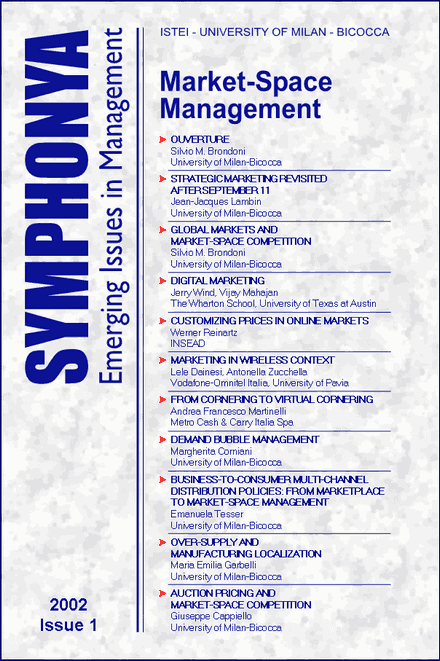Business-to-Consumer Multi-Channel Distribution Policies: from Marketplace to Market-Space Management
DOI:
https://doi.org/10.4468/2002.1.09tesserKeywords:
Click-and-Mortar, Brick-and-Mortar, Online Distribution, Offline Distribution, Distribution Channels, Multi-Channel Distribution, Online Prices, Market-Space ManagementAbstract
The new communication technologies, Internet in particular, allow businesses to achieve forms of virtual ubiquity, thus creating new factors in the control of market and competition spaces. These new tools generate the transition from marketplace to market-space, by eliminating physical distances and allowing access to products and services on a global scale.
The term ‘click-and-mortar’ denotes an integrated distribution system in which traditional distribution elements (physical stores, warehouses, stocks, information systems for distribution cycle management) are supported by tools made available by the new telecommunication technologies (online shopping, information platforms for distribution management, partnerships to run ‘virtual’ warehouses).
Click-and-mortar businesses are often the combination of a traditional retail business (brick-and-mortar) and an online start-up company.
Downloads
Published
How to Cite
Issue
Section
License
The authors retain all rights to the original work without any restrictions.
License for Published Contents

You are free to copy, distribute and transmit the work, and to adapt the work. You must attribute the work in the manner specified by the author or licensor (but not in any way that suggests that they endorse you or your use of the work).
License for Metadata

Symphonya published articles metadata are dedicated to the public domain by waiving all publisher's rights to the work worldwide under copyright law, including all related and neighboring rights, to the extent allowed by law.
You can copy, modify, distribute and perform the work, even for commercial purposes, all without asking permission.



